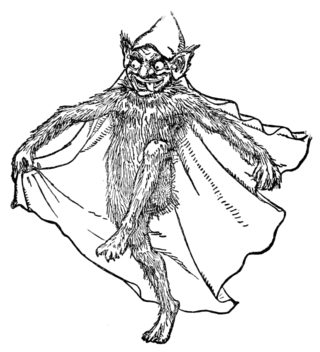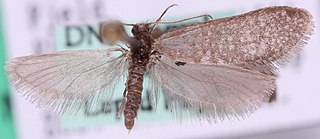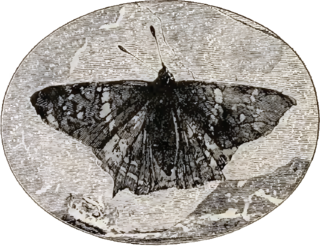
A language family is a group of languages related through descent from a common ancestor, called the proto-language of that family. The term family is a metaphor borrowed from biology, with the tree model used in historical linguistics analogous to a family tree, or to phylogenetic trees of taxa used in evolutionary taxonomy. Linguists thus describe the daughter languages within a language family as being genetically related. The divergence of a proto-language into daughter languages typically occurs through geographical separation, with different regional dialects of the proto-language undergoing different language changes and thus becoming distinct languages over time.

A statute is a formal written enactment of a legislative body, a stage in the process of legislation. Typically, statutes command or prohibit something, or declare policy. Statutes are laws made by legislative bodies; they are distinguished from case law or precedent, which is decided by courts, regulations issued by government agencies, and oral or customary law. Statutes may originate with the legislative body of a country, state or province, county, or municipality.
Latvian mythology is the collection of myths that have emerged throughout the history of Latvia, sometimes being elaborated upon by successive generations, and at other times being rejected and replaced by other explanatory narratives. These myths, for the most part, likely stem from Proto-Indo-European practices and the later folk traditions of the Latvian people and pre-Christian Baltic mythology.

Substance abuse, also known as drug abuse, is the use of a drug in amounts or by methods that are harmful to the individual or others. It is a form of substance-related disorder. Differing definitions of drug abuse are used in public health, medical, and criminal justice contexts. In some cases, criminal or anti-social behavior occurs when the person is under the influence of a drug, and long-term personality changes in individuals may also occur. In addition to possible physical, social, and psychological harm, the use of some drugs may also lead to criminal penalties, although these vary widely depending on the local jurisdiction.
An ancestor, also known as a forefather, fore-elder, or a forebear, is a parent or (recursively) the parent of an antecedent. Ancestor is "any person from whom one is descended. In law, the person from whom an estate has been inherited."

The opisthokonts are a broad group of eukaryotes, including both the animal and fungus kingdoms. The opisthokonts, previously called the "Fungi/Metazoa group", are generally recognized as a clade. Opisthokonts together with Apusomonadida and Breviata comprise the larger clade Obazoa.

Aquarius (♒︎) is the eleventh astrological sign in the zodiac, originating from the constellation Aquarius. Under the tropical zodiac, the Sun is in the Aquarius sign between about January 20 and February 18. Aquarius is one of the three air signs, alongside Gemini and Libra. The ruling planets of Aquarius are Saturn, and Uranus in modern astrology. It is a fixed Air Sign. The opposite sign of Aquarius is Leo.

J, or j, is the tenth letter of the Latin alphabet, used in the modern English alphabet, the alphabets of other western European languages and others worldwide. Its usual name in English is jay, with a now-uncommon variant jy.

Proposition 218 is an adopted initiative constitutional amendment which revolutionized local and regional government finance and taxation in California. Named the "Right to Vote on Taxes Act," it was sponsored by the Howard Jarvis Taxpayers Association as a constitutional follow-up to the landmark property tax reduction initiative constitutional amendment, Proposition 13, approved in June 1978. Proposition 218 was approved and adopted by California voters during the November 5, 1996, statewide general election.

A goblin is a small, grotesque, monstrous creature that appears in the folklore of multiple European cultures. First attested in stories from the Middle Ages, they are ascribed conflicting abilities, temperaments, and appearances depending on the story and country of origin, ranging from mischievous household spirits to malicious, bestial thieves. They often have magical abilities similar to a fairy or demon, such as the ability to shapeshift.

Siederia is a genus of small moths. It belongs to the bagworm moth family (Psychidae). Therein, it is placed in subfamily Naryciinae, or, if that is not considered sufficiently distinct, in the Taleporiinae.

The Erebidae are a family of moths in the superfamily Noctuoidea. The family is among the largest families of moths by species count and contains a wide variety of well-known macromoth groups. The family includes the underwings (Catocala); litter moths (Herminiinae); tiger, lichen, footman and wasp moths (Arctiinae); tussock moths (Lymantriinae), including the arctic woolly bear moth ; fruit-piercing moths ; micronoctuoid moths (Micronoctuini); snout moths (Hypeninae); and zales, though many of these common names can also refer to moths outside the Erebidae. Some of the erebid moths are called owlets.

The Lepidoptera fossil record encompasses all butterflies and moths that lived before recorded history. The fossil record for Lepidoptera is lacking in comparison to other winged species, and tending not to be as common as some other insects in the habitats that are most conducive to fossilization, such as lakes and ponds, and their juvenile stage has only the head capsule as a hard part that might be preserved. Yet there are fossils, some preserved in amber and some in very fine sediments. Leaf mines are also seen in fossil leaves, although the interpretation of them is tricky. Putative fossil stem group representatives of Amphiesmenoptera are known from the Triassic.
Asarta is a genus of snout moths. It was erected by Philipp Christoph Zeller in 1848 and is known from Switzerland, Spain, India and Turkey.

Siederia listerella is a moth of the Psychidae family. It was described by Carl Linnaeus in 1758. It is found in most of Europe, except Ireland, Great Britain, the Iberian Peninsula and most of the Balkan Peninsula.
Siederia rupicolella is a moth of the family Psychidae. It was described by Sauter in 1954. It is found in Germany, Switzerland, Norway, Sweden, Finland, Estonia and Latvia.











